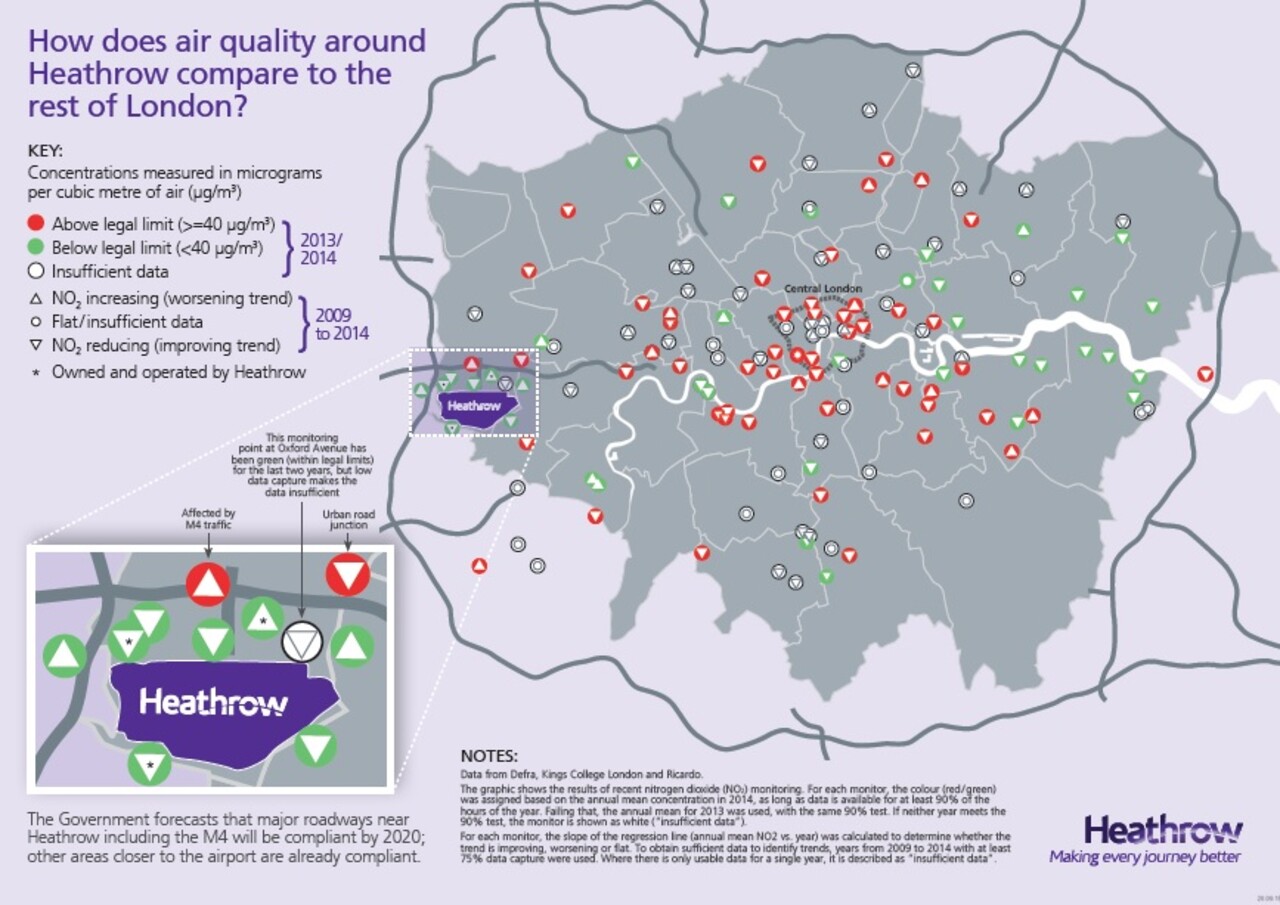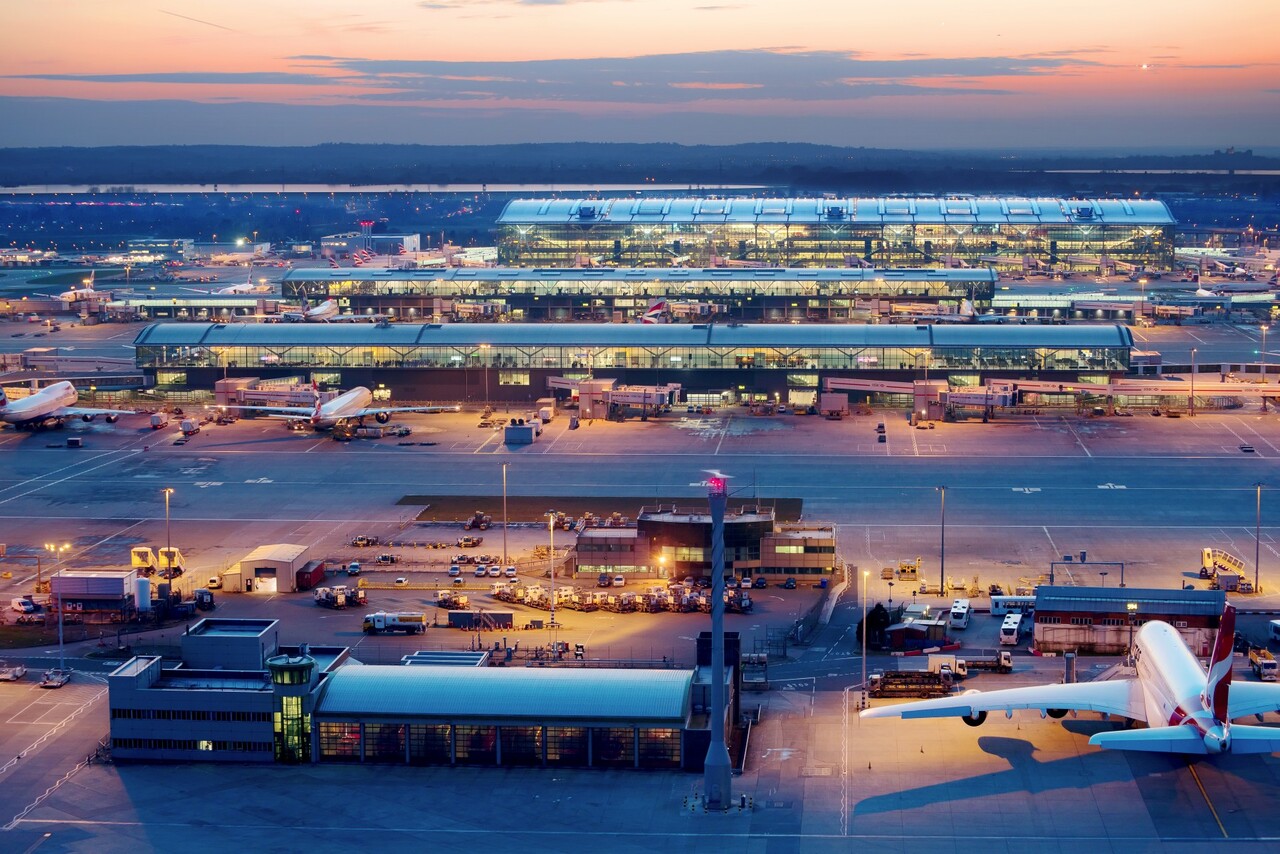- New image graphically shows areas immediately around the airport are meeting legal air quality limits now, but many locations elsewhere across London do not
- Air quality around Heathrow has been improving over recent years and will continue to get better in the future, allowing for Heathrow to expand and not exceed air quality limits
A new graphic released by Heathrow Airport today using independent data clearly shows how road vehicles, and not emissions from operations on the airport, are the biggest contributor to air pollution in London.
The information is drawn from the independent nation-wide network of pollution monitors run by the Government and by local authorities and is visually shown in a new graphic that demonstrates widespread exceedences of air quality limits across Greater London, while the nine monitors within 1 km of Heathrow airport show air quality has been consistently within the limit for the last 8 years or more.
The graphic shows only two monitors in the vicinity of Heathrow are in breach the air quality limits, both of which are beside major roads. The first, just within 2kms of the airport fence, is 35 metres from the M4 motorway, at which only 16% of the pollution comes from airport-related sources, while the other is beside a busy road junction in an urban centre, and the airport’s emissions are only 6% of its total. Put another way, even if Heathrow were completely closed down immediately, there would still be exceedances at these two locations. The latest forecasts by Defra show that both of these monitors are expected to be compliant by 2020, five years ahead of areas of central London.
This graphic is consistent with the conclusions of the Airports Commission, set up by the Prime Minister, which concluded Heathrow air quality in the future will be better than now. Following a £20 million, two and a half year detailed study of where the next runway should be, the Commission has confirmed a third runway at Heathrow can go ahead without breaching air quality legal limits, as long as the airport continues to implement its mitigation plans.
Matt Gorman, Heathrow Director of Environment and Sustainability said:
“Heathrow understands air quality is a real concern for local communities and it’s an issue London needs to tackle urgently. We have made it clear that Heathrow airport has and will continue to play its part. But this data shows that the real culprit of pollution in London is road traffic, so we need other partners to play their role. We’re working with partners like the Mayor’s office on a strategy to reduce emissions from non-airport related road-traffic which is the major cause of pollution in the Heathrow area.”
The airport already has an excellent record of improving air quality, and have reduced annual emissions from airport activity by 16% over five years. Heathrow’s Blueprint for Reducing Emissions outlines a 10 point plan of tangible actions to reduce Heathrow’s emissions, including a commitment to turn every car or small van we own to electric by 2020.



